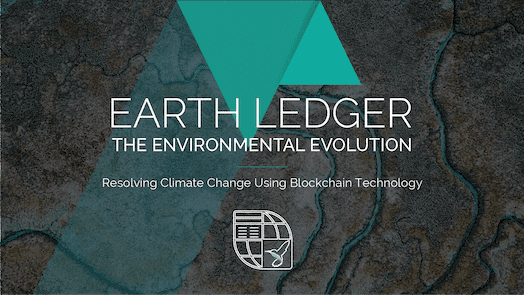This year offers nations their best chance yet to protect oceans and coasts, and to capitalize on the carbon-capturing potential of these environments, says Janis Searles Jones.
More than two-thirds of the planet is covered by ocean, but these waters have not received their due in terms of research dollars or public attention. That means the dangers that the seas face from climate change — and the solutions that they offer — are often overlooked.
For many, the ocean is out of sight and out of mind. It is easier to touch and count trees than fish, after all. But I have been near the ocean all my life, from growing up in California to living in Alaska. I am now in Oregon, where I am the chief executive of Ocean Conservancy, a non-profit organization working to conserve the oceans. My young daughter loves to visit the Pacific Northwest’s tide pools, and we have seen once-plentiful starfish waste away from a still-undetermined disease as Pacific waters have continued to warm. Some of my neighbours are oyster farmers, and their livelihoods are jeopardized by ocean acidification: waters dissolve the developing molluscs’ shells, and then they cannot grow.
When I lived in Alaska, I watched Juneau’s iconic Mendenhall Glacier retreat, knowing that the ice had receded by more than 2,800 metres over the past century. And in August, I was among the many sobered by the news that around 11 billion tonnes of the Greenland ice sheet had melted in just 24 hours.
But this month, doors to action might open. For the first time in its three decades of producing dozens of reports, the Intergovernmental Panel on Climate Change (IPCC) has created a stand-alone assessment that synthesizes scientific research specifically on how rising carbon emissions are affecting marine and coastal communities. Its implications affect the entire planet. The ocean makes life on land possible: it provides half of Earth’s oxygen and fuels the water cycle that supplies fresh water, and more than three billion people worldwide depend on fish as a major source of protein.
These life-giving services are all imperilled. The ocean’s levels of dissolved oxygen have declined as its temperatures have risen. Waters that flow across land and eventually into lakes or seas carry fertilizers, detergents and even sewage. That nutrient runoff is increasing, and the excessive algal and microbial growth that it fuels has led to at least 500 sites in coastal waters being classified as ‘dead zones’ — areas with so little oxygen that most marine life cannot survive. The largest of these is bigger than Scotland (roughly 80,000 square kilometres). The ocean has already absorbed 90% of the excess heat from global warming and has become 30% more acidic since the Industrial Revolution. This threatens those who depend on fishing or aquaculture for sustenance, and the roughly 60 million people around the world who rely on those industries for work. Marginalized communities will continue to bear the brunt of climate change, but the privileged will feel the effects, too: more than US$100 billion of coastal real estate is at risk in the United States alone because of sea-level rise.
Even so, landmark conservation and climate-change agreements have largely ignored the ocean. Take the goal of restricting global temperatures to within 2 °C above pre-industrial levels that is stated in the 2015 Paris climate agreement. The IPCC predicts that if global temperatures rise by 1.5 °C, perhaps 10–30% of coral reefs will survive, diminishing the habitat of roughly one-quarter of all ocean species, and affecting coastal storm protection, food, jobs, recreation and even medicines. But in a future that is 2 °C warmer, only 1% of reefs might survive, a remnant that could be too small to support all the species that depend on reefs. We need greater ambition to give the ocean a fighting chance.
The ocean’s potential to mitigate climate change is also often overlooked. Protecting and restoring ocean habitats such as seagrasses, salt marshes and mangroves, as well as their associated food webs, can sequester carbon dioxide from the atmosphere at rates up to four times higher than terrestrial forests can. Offshore wind energy has the potential to contribute more than 7,000 terawatt hours per year of clean energy in the United States alone — roughly double the amount of electricity used in the United States in 2014.
It is time for international agreements to make increasingly ambitious commitments that both explicitly incorporate how the ocean is threatened by climate change and take advantage of how the ocean can allay it. The United Nations 25th climate conference in Santiago, Chile, this December will provide an opportunity for countries to make those commitments. First and foremost, we must substantially reduce greenhouse-gas emissions, including specifically targeting CO2reductions to fight ocean acidification. This is the single most important action we can take for the ocean.
But we also need to incorporate ocean-centred solutions in the global decarbonization effort. This means reducing shipping emissions to zero by 2050, starting with short-term measures such as slow steaming (operating ships at below-maximum speeds), and following up with long-term changes, including switching to zero-carbon propulsion systems. Decarbonizing the global shipping fleet would be roughly equivalent to cutting all of Germany’s carbon emissions.
And we need to scale up well-planned and well-sited offshore renewable energy. Individual countries should take advantage of the carbon-storage capacity of coastal and ocean habitats, and incorporate their protection and restoration into climate plans.
Even with increased commitments such as these, some losses will be unavoidable. But we can make ocean ecosystems more resilient by reducing the amount of other stress that we place on the ocean. For example, the Ocean Conservancy supports the call for at least 30% of the global ocean to be set aside as marine protected areas (MPAs), up from roughly 8% now. MPAs are a proven conservation tool that, when applied effectively, enhance the size, abundance and biodiversity of ocean animals. We must also ramp up global efforts to reduce overfishing, plastic waste, chemical pollution and nutrient run-off. Appropriate regional planning and infrastructure can help coastal communities to adapt to rising sea levels and the greater likelihood of storms, floods and extreme events.
Achieving all these goals will require a lot of work and political buy-in, but the ocean is an incredible unifier. We all rely on the ocean, whether we are coastal or inland residents, and whether we fish, farm or just eat and breathe. Nations can reach the agreements needed to ensure a healthy ocean, but those discussions must begin in earnest right now. There is not one minute to waste.








